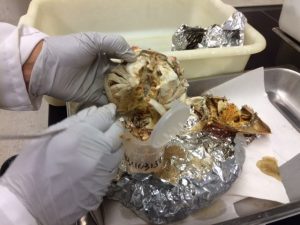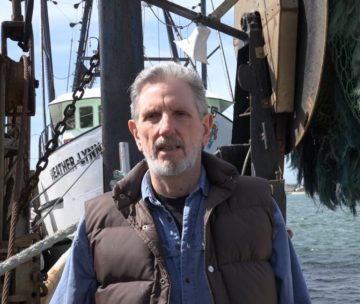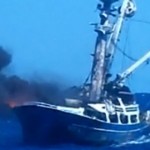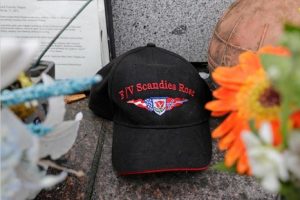Monthly Archives: August 2016
Shortage of herring for lobster bait market maxes out Maines Pogey Quota for the first time.
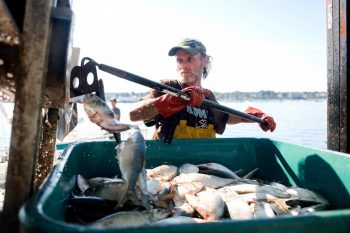 The offshore supply of fresh Atlantic herring, the go-to bait for most Maine lobstermen, has been in short supply, driving prices up as much 30 percent in late July, the Maine Lobstermen’s Association said. The shortage triggered near-shore fishing restrictions to try to stretch out the summer herring catch in hopes of keeping bait bags full as Maine’s lobster season hits its peak. With herring getting scarce and expensive, fishermen have turned to other bait for relief, especially the pogie, the local name for Atlantic menhaden. It’s the No. 2 bait fish among Maine lobstermen, according to a state Department of Marine Resources survey. Maine fishermen have never landed the state’s entire pogie quota, which is set at about 166,000 pounds annually. But this year they had caught all of that and a bit more by July 31, said Megan Ware, head of the menhaden program for the Atlantic States Marine Fisheries Commission, which oversees the pogie catch and other migratory fisheries on the East Coast. Read the story here 09:41
The offshore supply of fresh Atlantic herring, the go-to bait for most Maine lobstermen, has been in short supply, driving prices up as much 30 percent in late July, the Maine Lobstermen’s Association said. The shortage triggered near-shore fishing restrictions to try to stretch out the summer herring catch in hopes of keeping bait bags full as Maine’s lobster season hits its peak. With herring getting scarce and expensive, fishermen have turned to other bait for relief, especially the pogie, the local name for Atlantic menhaden. It’s the No. 2 bait fish among Maine lobstermen, according to a state Department of Marine Resources survey. Maine fishermen have never landed the state’s entire pogie quota, which is set at about 166,000 pounds annually. But this year they had caught all of that and a bit more by July 31, said Megan Ware, head of the menhaden program for the Atlantic States Marine Fisheries Commission, which oversees the pogie catch and other migratory fisheries on the East Coast. Read the story here 09:41
Fishermen in Atlantic Canada cash in on high lobster prices
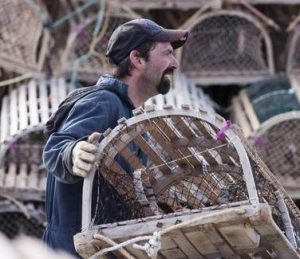 When 50-year-old lobster fisherman Albert Sampson wrapped up the season a few weeks ago, he was pretty pleased with the results. During an intense two month season working 12- to 14-hour days, six days a week, in the high winds off the southeast coast of Cape Breton Island, he and his crew of two deckhands brought in $500,000-worth of lobster. This year, Mr. Sampson got an average price of $8 a pound for his catch, after averaging about $5.75 to $6 a pound last year. I think its been a banner season price-wise for anybody in the Maritimes, says Mr. Sampson, who has been fishing lobster for 20 years. I hope it stays the same next season. Mr. Sampson is one of thousands of lobster fishermen across Atlantic Canada who have benefited from high lobster prices in 2016. In a region where jobs can be hard to come by, especially in rural areas where the majority of lobster fishermen live and fish out of, the increase in lobster prices is welcome news. Read the story here 09:09
When 50-year-old lobster fisherman Albert Sampson wrapped up the season a few weeks ago, he was pretty pleased with the results. During an intense two month season working 12- to 14-hour days, six days a week, in the high winds off the southeast coast of Cape Breton Island, he and his crew of two deckhands brought in $500,000-worth of lobster. This year, Mr. Sampson got an average price of $8 a pound for his catch, after averaging about $5.75 to $6 a pound last year. I think its been a banner season price-wise for anybody in the Maritimes, says Mr. Sampson, who has been fishing lobster for 20 years. I hope it stays the same next season. Mr. Sampson is one of thousands of lobster fishermen across Atlantic Canada who have benefited from high lobster prices in 2016. In a region where jobs can be hard to come by, especially in rural areas where the majority of lobster fishermen live and fish out of, the increase in lobster prices is welcome news. Read the story here 09:09
Coast Guard medevacs 19-year-old fisherman near Gold Beach, Ore.
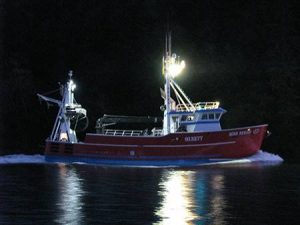 A Coast Guard aircrew medevaced a 19-year-old man from Siletz who was reportedly suffering lower gastrointestinal bleeding aboard a commercial fishing vessel 30 miles west of Gold Beach, Monday. An MH-65 Dolphin helicopter crew safely transferred the man to emergency medical services personnel waiting at Air Station North Bend, who took him by ambulance to Bay Area Hospital in Coos Bay. Watchstanders at Sector North Bend received a relay call requesting medical attention for the man at 12:21 p.m. from the crew of the 80-foot commercial . The aircrew arrived on scene at 2:20 p.m. and flew the man to emergency medical care. The man reported he was not in any pain but had suffered from similar gastrointestinal issues in the past and required medical attention. The crew of Miss Berdie was reportedly fishing for Pacific whiting at the time of the rescue. Link – Video 08:40
A Coast Guard aircrew medevaced a 19-year-old man from Siletz who was reportedly suffering lower gastrointestinal bleeding aboard a commercial fishing vessel 30 miles west of Gold Beach, Monday. An MH-65 Dolphin helicopter crew safely transferred the man to emergency medical services personnel waiting at Air Station North Bend, who took him by ambulance to Bay Area Hospital in Coos Bay. Watchstanders at Sector North Bend received a relay call requesting medical attention for the man at 12:21 p.m. from the crew of the 80-foot commercial . The aircrew arrived on scene at 2:20 p.m. and flew the man to emergency medical care. The man reported he was not in any pain but had suffered from similar gastrointestinal issues in the past and required medical attention. The crew of Miss Berdie was reportedly fishing for Pacific whiting at the time of the rescue. Link – Video 08:40
Fisherman convicted after driving at fishery officer
 A Tauranga commercial fisherman has been convicted and fined $3000 for deliberately driving his vehicle at a fishery officer who had signalled for him to pull over. Bruce William Clifford Roberts, a 50-year-old commercial fisherman, was driving his 4×4 from Port Ohope in March this year when a fishery officer, who was standing approximately 100m away from Roberts’ car, indicated to him to pull over. Roberts was convicted for behaving in a threatening manner towards a fishery officer and fined $3000 plus $130 courts costs when he appeared in the Whakatane District Court on August 3. He also had to pay a $1500 redemption fee for the return of the forfeit vehicle used in the offence. The sentencing judge took into account Roberts’ early guilty plea and other mitigating factors including a restorative justice conference at which Roberts apologised to the fishery officer involved. Read the rest here 19:30
A Tauranga commercial fisherman has been convicted and fined $3000 for deliberately driving his vehicle at a fishery officer who had signalled for him to pull over. Bruce William Clifford Roberts, a 50-year-old commercial fisherman, was driving his 4×4 from Port Ohope in March this year when a fishery officer, who was standing approximately 100m away from Roberts’ car, indicated to him to pull over. Roberts was convicted for behaving in a threatening manner towards a fishery officer and fined $3000 plus $130 courts costs when he appeared in the Whakatane District Court on August 3. He also had to pay a $1500 redemption fee for the return of the forfeit vehicle used in the offence. The sentencing judge took into account Roberts’ early guilty plea and other mitigating factors including a restorative justice conference at which Roberts apologised to the fishery officer involved. Read the rest here 19:30
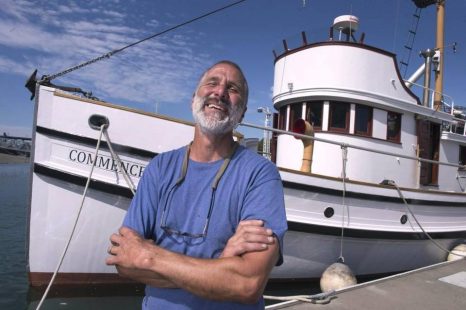
At the helm: Master shipwright keeping South Sound maritime tradition afloat
After quick working trips in Maryland, Tacoma and recently Croatia, Michael Vlahovich often finds peace onboard the Commencement. He’s sat at the helm of the 90-year-old fishing boat often. “Rain or shine, this is the place I’ll be,” the 66-year-old master shipwright said of his favorite place on the boat. Despite its age, the Commencement is Vlahovich’s baby. For 70 years, Croatian net fisherman, much like Vlahovich’s Croatian immigrant parents, used the vessel in Washington and Alaska before it was retired and Vlahovich adopted it for rehabilitation in 1996. He’s worked on keeping it ship shape ever since. The Commencement is 65 feet of bright white wood that Vlahovich and members of his nonprofit, the Coastal Heritage Alliance, have painted and restored since it became the organization’s flagship in 2003. Read the story here with six images, and a video 16:31
Why Green Crabs Are Invading the East Coast
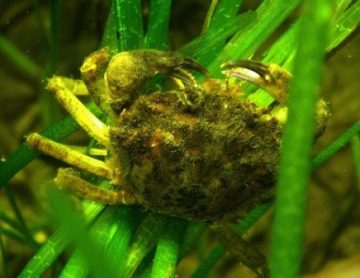 In the Gulf of Maine, as elsewhere in the world, many species are feeling the pressure brought on by climate change. A changing environment makes them more susceptible to one existential threat: invasive species. This, in turn, is having a huge impact on the local fishing industry that employs tens of thousands of people in the area, and provides seafood to the local restaurants that Maine is famous for. In short, the health of the Maine economy largely depends on the health of the Gulf of Maine, and the marine species that have made it their home. But invasive species like green crabs are coming in and wreaking havoc. Foreign species are defined as invasive when they cause the displacement of an endemic one. In the Gulf of Maine, that includes eelgrass, blue mussels, oysters, and many other types of shellfish. Invaders disrupt the trophic hierarchy,, Read the story here 15:35
In the Gulf of Maine, as elsewhere in the world, many species are feeling the pressure brought on by climate change. A changing environment makes them more susceptible to one existential threat: invasive species. This, in turn, is having a huge impact on the local fishing industry that employs tens of thousands of people in the area, and provides seafood to the local restaurants that Maine is famous for. In short, the health of the Maine economy largely depends on the health of the Gulf of Maine, and the marine species that have made it their home. But invasive species like green crabs are coming in and wreaking havoc. Foreign species are defined as invasive when they cause the displacement of an endemic one. In the Gulf of Maine, that includes eelgrass, blue mussels, oysters, and many other types of shellfish. Invaders disrupt the trophic hierarchy,, Read the story here 15:35
10-year pilot project: On-board processing of Hake discussed by Regional District of Mount Waddington board
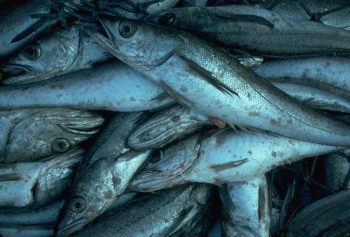 Plans for a 10-year pilot project, which will allow on-board processing of Hake, was discussed at the July 19 Regional District of Mount Waddington board meeting after copies of two letters were received. “As you know we are committed to shore based processing in BC. While this pilot program may be for Hake only, we have members who, under certain conditions, can process Hake in the north and south,” said Kim Olsen, president of UFAWU-Unifor in a letter to Neil Davis, regional manager, ground fish, Fisheries and Oceans Canada. “We oppose the possibility of losing work for them or any other shore-based plant,” Davis said. “In addition, we see this as a foot in the door for the trawl fishery of BC being turned over to a fleet of factory ships,” he continued. Read the rest here 15:00
Plans for a 10-year pilot project, which will allow on-board processing of Hake, was discussed at the July 19 Regional District of Mount Waddington board meeting after copies of two letters were received. “As you know we are committed to shore based processing in BC. While this pilot program may be for Hake only, we have members who, under certain conditions, can process Hake in the north and south,” said Kim Olsen, president of UFAWU-Unifor in a letter to Neil Davis, regional manager, ground fish, Fisheries and Oceans Canada. “We oppose the possibility of losing work for them or any other shore-based plant,” Davis said. “In addition, we see this as a foot in the door for the trawl fishery of BC being turned over to a fleet of factory ships,” he continued. Read the rest here 15:00
Fish, Food and Allied Workers Union News Release: Improvements to Northern Cod Fishery are a Step in the Right Direction
 St. Johns – The one-year management approach for the 2016 2J3KL Stewardship Cod fishery signals a new chapter in rebuilding the cod fishery in Newfoundland and Labrador. The improvements in the approach for the 2016 fishery, announced by the Department of Fisheries and Oceans (DFO) last week, includes a lengthened season with opportunities to harvest more cod. According to data from DFO, the Northern cod spawning stock biomass has increased from 20,000 tonnes in 1997 to 300,000 tonnes today. “Rebuilding the cod fishery will bring with it many challenges and opportunities,” said Keith Sullivan, President of the Fish, Food and Allied Workers Union. “This new approach will provide harvesters with an increased opportunity to harvest and will give the processing sector opportunities to market more sustainable, high quality cod.” Read the press release here 11:34
St. Johns – The one-year management approach for the 2016 2J3KL Stewardship Cod fishery signals a new chapter in rebuilding the cod fishery in Newfoundland and Labrador. The improvements in the approach for the 2016 fishery, announced by the Department of Fisheries and Oceans (DFO) last week, includes a lengthened season with opportunities to harvest more cod. According to data from DFO, the Northern cod spawning stock biomass has increased from 20,000 tonnes in 1997 to 300,000 tonnes today. “Rebuilding the cod fishery will bring with it many challenges and opportunities,” said Keith Sullivan, President of the Fish, Food and Allied Workers Union. “This new approach will provide harvesters with an increased opportunity to harvest and will give the processing sector opportunities to market more sustainable, high quality cod.” Read the press release here 11:34
Stacey Marshall Tabor – ‘I just want to run a boat’ – Millbrook First Nation human rights ruling appeal dismissed
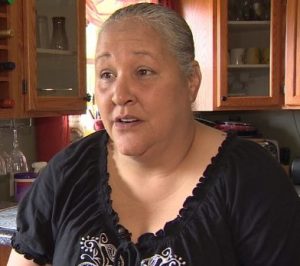 A Nova Scotian Mi’kmaq woman who won a human rights complaint against her community says she “feels vindicated” after a federal court dismissed an attempt by the Millbrook band to overturn the tribunal’s decision. Stacey Marshall Tabor has spent the past decade years fighting the band for her right to work in the local fishing industry and says as a parent, she felt she had to make a stand. “I put myself in a position that I had to stand up for these women, for all these young girls,” she said. “I have a daughter, she’s watching me 24-7. What if I had bowed down and said, ‘oh yeah, ok you can shove me around.’ Wouldn’t have looked good, would it, as a mother.” “I just want to run a boat and I want to have full access like every other man in that fishery to the fisheries,” she said. Read the story here 11:02
A Nova Scotian Mi’kmaq woman who won a human rights complaint against her community says she “feels vindicated” after a federal court dismissed an attempt by the Millbrook band to overturn the tribunal’s decision. Stacey Marshall Tabor has spent the past decade years fighting the band for her right to work in the local fishing industry and says as a parent, she felt she had to make a stand. “I put myself in a position that I had to stand up for these women, for all these young girls,” she said. “I have a daughter, she’s watching me 24-7. What if I had bowed down and said, ‘oh yeah, ok you can shove me around.’ Wouldn’t have looked good, would it, as a mother.” “I just want to run a boat and I want to have full access like every other man in that fishery to the fisheries,” she said. Read the story here 11:02
Better science and data, not catch shares
 With the exception of three mini-seasons (2012-2014) the red snapper fishery in the South Atlantic has been effectively closed for over six years. By most accounts from fishermen, red snapper are very plentiful – they are routinely encountered while fishermen target other species and divers report large schools. Yet, the stock assessment presented to the South Atlantic Fishery Management Council in June says that red snapper are still overfished and that overfishing is still occurring. This despite a lot of uncertainty about the data used in the assessment. Give the SAFMC credit for not accepting the assessment and asking its Scientific and Statistical Committee to reexamine the assessment and stock status determination this fall. The ongoing saga of the red snapper fishery highlights the fact that stock assessments can be flawed because of the lack of good biological and historical abundance information. In other words, much better science and data on our fisheries is needed. Instead of devoting adequate financial resources into stock assessments, NOAA has spent about $160 million over the last six years pushing its National Catch Share Policy in an effort to privatize fisheries. Studies have shown that catch share programs hurt fishing communities by destroying jobs and don’t provide any biological benefit to fisheries. 10:36
With the exception of three mini-seasons (2012-2014) the red snapper fishery in the South Atlantic has been effectively closed for over six years. By most accounts from fishermen, red snapper are very plentiful – they are routinely encountered while fishermen target other species and divers report large schools. Yet, the stock assessment presented to the South Atlantic Fishery Management Council in June says that red snapper are still overfished and that overfishing is still occurring. This despite a lot of uncertainty about the data used in the assessment. Give the SAFMC credit for not accepting the assessment and asking its Scientific and Statistical Committee to reexamine the assessment and stock status determination this fall. The ongoing saga of the red snapper fishery highlights the fact that stock assessments can be flawed because of the lack of good biological and historical abundance information. In other words, much better science and data on our fisheries is needed. Instead of devoting adequate financial resources into stock assessments, NOAA has spent about $160 million over the last six years pushing its National Catch Share Policy in an effort to privatize fisheries. Studies have shown that catch share programs hurt fishing communities by destroying jobs and don’t provide any biological benefit to fisheries. 10:36
Queensland Government extends fishers “Catch Share” buyout period
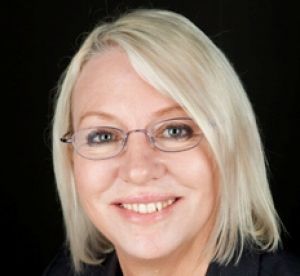 The state government has extended applications for fishing business buyout payments until September 2 2016 following strong interest from commercial fishers. Minister for Primary Industries, Minister for Lands and Water, Niall Blair, said the decision follows feedback from the industry. “Over the last few weeks, there has been a steady increase in applications by fishers for the $20,000 fishing business buyouts available under the Commercial Fisheries Business Adjustment Program,” the minister said. “This extension will now give fishers more time to consider their options under the Commercial Fisheries Business Adjustment Program and if they wish, apply for a $20,000 fishing business buyout. Laurieton-based commercial fisher Paul Moody says this latest decision only exemplifies how ‘ridiculous this scheme really is’. “I don’t know why they are doing it (extending the application period). It appears that the government is making it up as they go along,” he said. Read the rest here 09:45
The state government has extended applications for fishing business buyout payments until September 2 2016 following strong interest from commercial fishers. Minister for Primary Industries, Minister for Lands and Water, Niall Blair, said the decision follows feedback from the industry. “Over the last few weeks, there has been a steady increase in applications by fishers for the $20,000 fishing business buyouts available under the Commercial Fisheries Business Adjustment Program,” the minister said. “This extension will now give fishers more time to consider their options under the Commercial Fisheries Business Adjustment Program and if they wish, apply for a $20,000 fishing business buyout. Laurieton-based commercial fisher Paul Moody says this latest decision only exemplifies how ‘ridiculous this scheme really is’. “I don’t know why they are doing it (extending the application period). It appears that the government is making it up as they go along,” he said. Read the rest here 09:45
North Carolina Fisheries Association Weekly Update for August 8, 2016
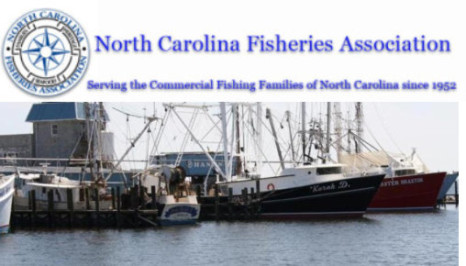 Click here to read the Weekly Update, to read all the updates, Click here 09:15
Click here to read the Weekly Update, to read all the updates, Click here 09:15
Mid-Atlantic Fishery Management Council meeting in Virginia Beach, VA August 8 – 11, 2016
 The public is invited to attend the Mid-Atlantic Fishery Management Council’s April meeting to be held at the Hilton Virginia Beach Oceanfront, 3001 Atlantic Avenue, Virginia Beach, VA 23451, Telephone 757-213-3000. Council Meeting Agenda, For online access to the meeting, enter as a guest Click here 07:12
The public is invited to attend the Mid-Atlantic Fishery Management Council’s April meeting to be held at the Hilton Virginia Beach Oceanfront, 3001 Atlantic Avenue, Virginia Beach, VA 23451, Telephone 757-213-3000. Council Meeting Agenda, For online access to the meeting, enter as a guest Click here 07:12
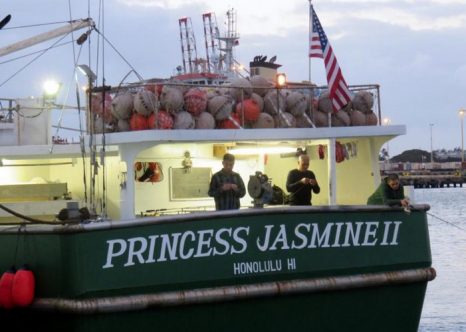
WPFMC asks for transparent analysis of proposed marine monument expansion
The Western Pacific Regional Fishery Management Council on Wednesday agreed to a resolution that asks the U.S. government to address a suite of concerns before acting on the proposed expansion on the Papahānaumokuākea Marine National Monument or MNM in the Northwestern Hawaiian Islands. Council members Suzanne Case, Hawaii Department of Land and Natural Resources chair, and Julie Leialoha, Conservation Council for Hawaii president, voted against the proposal. National Marine Fisheries Service or NMFS Pacific Islands Regional Administrator Michael Tosatto abstained. The resolution requests a “public, transparent, deliberative, documented and science-based process” to address the proposed expansion, which could prohibit fishing in two-thirds of the U.S. exclusive economic zone, i.e., waters out to 200 miles from shore, around Hawaii. The resolution is being sent to President Obama, the White House Council on Environmental Quality and the secretaries of Commerce, the Interior and State. Read the rest here 16:47
Historic fishing vessel refloated after it overturned in high winds – “she just keeled right over”!
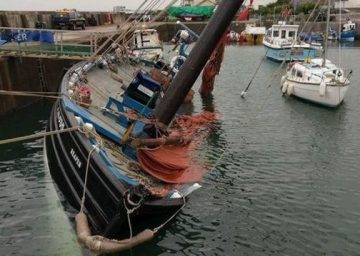 One person was taken to hospital when the Reaper, a 70ft vessel dating back to 1902, blew on to its side at Johnshaven Harbour. Firefighters from Inverbervie and Stonehaven had worked to pump water from the hull. Reaper is one of the few of its kind to have remained in a seagoing condition. The boat, which was re-fitted in 2004, is part of the core collection of the national historic ships fleet. Joan Paton, chairwoman of the Scottish Fisheries Museum Boats Club, said members of the public had been onboard when it was blown over. She said: “We were just opening the boat to the public, all was going very well, the boat was looking pristine, very clean and tidy. “Unfortunately, just a freak gust of wind caught the sail, a rope snapped and . Read the rest here 14:10
One person was taken to hospital when the Reaper, a 70ft vessel dating back to 1902, blew on to its side at Johnshaven Harbour. Firefighters from Inverbervie and Stonehaven had worked to pump water from the hull. Reaper is one of the few of its kind to have remained in a seagoing condition. The boat, which was re-fitted in 2004, is part of the core collection of the national historic ships fleet. Joan Paton, chairwoman of the Scottish Fisheries Museum Boats Club, said members of the public had been onboard when it was blown over. She said: “We were just opening the boat to the public, all was going very well, the boat was looking pristine, very clean and tidy. “Unfortunately, just a freak gust of wind caught the sail, a rope snapped and . Read the rest here 14:10
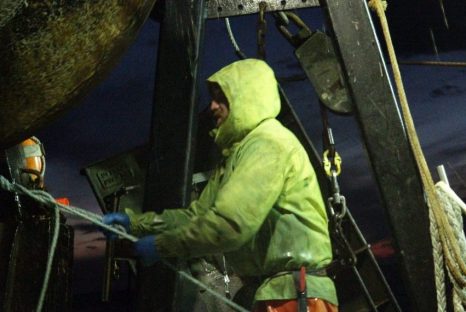
Transition to industry based surveys approved by NOAA. At last!
The announcement from NOAA on Tuesday that they will begin to transition the Northeast Fisheries Science Center’s bottom trawl surveys from their research ship, the Henry B. Bigelow, to fishing industry vessels is a cause for celebration on the waterfront and represents a real opportunity to get the fishing industry in New England out of disaster mode. It is a bold decision but it is undoubtedly the correct one and, from an industry perspective, one that is long overdue. Science Center director Dr. Bill Karp deserves enormous credit for setting this process in motion. It is a clear signal that NOAA wants to build trust and transparency, qualities that have not always been in evidence in its long and difficult relationship with the commercial fishing industry in New England. Read the rest here 13:15
Fifteen Years Ago Lives Were Lost Aboard The Starbound- My Cousin Joe Marcantonio Speaks Out About The Events Which Took Place That Night
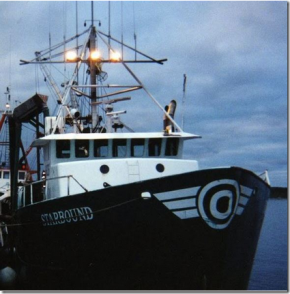 The Starbound sank 130 miles off Cape Ann August 5th, 2001. It was six months after that fateful night fifteen years ago today when my cousin Joe Marcantonio sat down at his computer and wrote down exactly what happened the night his herring boat was run down by the oil tanker Virgo and his three crewmembers were lost to the sea. Joe trusted me and our platform GoodMorningGloucester to tell the story that had been locked away and never been told to anyone for years. He wrote this account of the events that led up to the sinking of his boat so that his family and the families of his crewmembers would know exactly what happened. The sinking of Joe’s boat the Starbound happend 23 years after Joe had lost his own father to the sea in the sinking of the Gloucester Dragger the F/V Captain Cosmo. The entire crew including Joe’s father Captain Cosmo Marcantonio were lost at sea in September of 1978. 23 years later- ten years ago Joe would recount the events and what was racing through his mind. Joe writes-,,, Click here to read this great article here 12:47
The Starbound sank 130 miles off Cape Ann August 5th, 2001. It was six months after that fateful night fifteen years ago today when my cousin Joe Marcantonio sat down at his computer and wrote down exactly what happened the night his herring boat was run down by the oil tanker Virgo and his three crewmembers were lost to the sea. Joe trusted me and our platform GoodMorningGloucester to tell the story that had been locked away and never been told to anyone for years. He wrote this account of the events that led up to the sinking of his boat so that his family and the families of his crewmembers would know exactly what happened. The sinking of Joe’s boat the Starbound happend 23 years after Joe had lost his own father to the sea in the sinking of the Gloucester Dragger the F/V Captain Cosmo. The entire crew including Joe’s father Captain Cosmo Marcantonio were lost at sea in September of 1978. 23 years later- ten years ago Joe would recount the events and what was racing through his mind. Joe writes-,,, Click here to read this great article here 12:47
Fishermen, scientists split on closures of triggerfish, amberjack
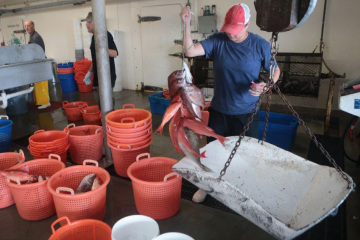 On any given day, charter boat captain Jeff Lassiter and his customers will catch dozens of gray triggerfish. Then they’ll toss them back in the water. “They’re dang near a nuisance,” But just two weeks before the scheduled Aug. 1 reopening date, national and state fishing officials changed their minds. Because of overfishing, NOAA Fisheries decided not to reopen triggerfish in federal waters this year, and the Florida Fish and Wildlife Conservation Commission (FWC) elected to follow suit. Officials said anglers already had met the allowable catch quota for the year, and to keep going would jeopardize the overall sustainability of the stock. NOAA also opted to not reopen amberjack for the same reasons, which means head boats and charter boat captains, which all have federal permits, will not be able to take customers out to fish for either species. Read the rest here 12:13
On any given day, charter boat captain Jeff Lassiter and his customers will catch dozens of gray triggerfish. Then they’ll toss them back in the water. “They’re dang near a nuisance,” But just two weeks before the scheduled Aug. 1 reopening date, national and state fishing officials changed their minds. Because of overfishing, NOAA Fisheries decided not to reopen triggerfish in federal waters this year, and the Florida Fish and Wildlife Conservation Commission (FWC) elected to follow suit. Officials said anglers already had met the allowable catch quota for the year, and to keep going would jeopardize the overall sustainability of the stock. NOAA also opted to not reopen amberjack for the same reasons, which means head boats and charter boat captains, which all have federal permits, will not be able to take customers out to fish for either species. Read the rest here 12:13
Coast Guard Air Station New Orleans Medevacs Diver from Fishing Vessel
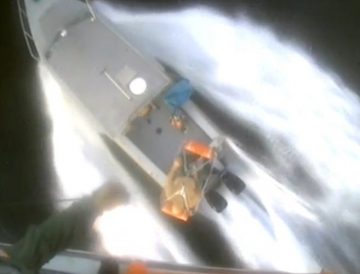 A Coast Guard aircrew medevaced a 60-year-old-man suffering from signs of decompression sickness from a fishing vessel Friday evening. Jimmy Richard, 60, was aboard the Heavy Metal approximately 30 miles south of the Atchafalaya River when crewmembers requested Coast Guard assistance at 5:25 p.m. Coast Guard Sector New Orleans watchstanders launched a Coast Guard MH-65 helicopter crew from to conduct the medevac and an HC-144 crew from Coast Guard Aviation Training Center Mobile to provide additional support. The MH-65 crew arrived on scene at 7:03 p.m. and hoisted Richard. Richard was taken to Naval Air Station Joint Reserve Base New Orleans and transferred by ambulance to West Jefferson Medical Center and was reported in stable condition. link – watch video here 10:43
A Coast Guard aircrew medevaced a 60-year-old-man suffering from signs of decompression sickness from a fishing vessel Friday evening. Jimmy Richard, 60, was aboard the Heavy Metal approximately 30 miles south of the Atchafalaya River when crewmembers requested Coast Guard assistance at 5:25 p.m. Coast Guard Sector New Orleans watchstanders launched a Coast Guard MH-65 helicopter crew from to conduct the medevac and an HC-144 crew from Coast Guard Aviation Training Center Mobile to provide additional support. The MH-65 crew arrived on scene at 7:03 p.m. and hoisted Richard. Richard was taken to Naval Air Station Joint Reserve Base New Orleans and transferred by ambulance to West Jefferson Medical Center and was reported in stable condition. link – watch video here 10:43
California Offshore National Marine Monuments Proposal Would Ban Commercial Fishing of SRB’s
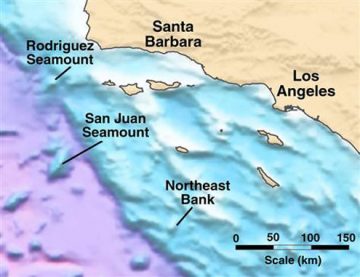 More than 40 West Coast commercial and recreational fishing groups, working in conjunction with the National Coalition for Fishing Communities, has written to the White House, the Secretaries of Commerce and Interior, and officials in the National Oceanic and Atmospheric Administration, in opposition to the proposed designation of marine monuments off the coast of California that prohibit commercial fishing. A recent proposal called on President Obama to declare as National Monuments virtually all Pacific seamounts, ridges, and banks (SRB’s) off the California coast using his executive authority under the Antiquities Act. If enacted by executive order, these new monuments would permanently close virtually all of California’s offshore SRB’s to commercial fishing. Read the rest here 10:00
More than 40 West Coast commercial and recreational fishing groups, working in conjunction with the National Coalition for Fishing Communities, has written to the White House, the Secretaries of Commerce and Interior, and officials in the National Oceanic and Atmospheric Administration, in opposition to the proposed designation of marine monuments off the coast of California that prohibit commercial fishing. A recent proposal called on President Obama to declare as National Monuments virtually all Pacific seamounts, ridges, and banks (SRB’s) off the California coast using his executive authority under the Antiquities Act. If enacted by executive order, these new monuments would permanently close virtually all of California’s offshore SRB’s to commercial fishing. Read the rest here 10:00
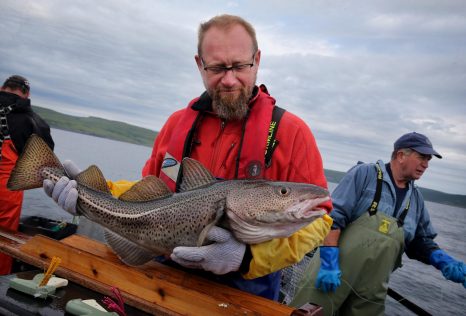
New England’s embattled fishermen – To the north, in the waters off Newfoundland, the cod are coming back
For more than 500 years, the iceberg-filled waters off Newfoundland’s craggy coast teemed with a seemingly endless supply of cod, so much that it sparked wars, drew immigrants from far away, and defined the rhythm of life. Here, cod have been so woven into the culture that most people refer to them simply as fish — as if there were no other. In the late 1960s, when times were good, local fishermen would catch some 800,000 metric tons a year of the olive-backed fish known as the northern cod. In the 1980s, their catch dropped by more than one-third, but the population still appeared relatively healthy. In 1987, the government estimated there were 940,000 metric tons of cod old enough to reproduce. For cod fishermen in New England, where federal authorities two years ago declared a similar moratorium on commercial catches, Newfoundland’s experience provides lessons in the consequences of poor management, the possible impact of climate change, the long years — even decades — it can take for the population to rebound. Read the story here 09:21
Selling out Fishermen so the Tourists can catch the fish! Commercial license Buyout, Round II
 On Monday the Queensland Government begins a second round of voluntary licence buybacks for commercial anglers, following the introduction of the state’s three new net-free fishing zones on November 1 last year. The government aimed to buyback 46 licences, but only secured 27 during the first round. Four of those were from Mackay-area fishermen, one was from Cairns and 22 from Rockhampton. While only commercial fishermen operating within the areas of the three net-free zones were offered the buyback last time, this second round will offer remuneration to license-holders from within and adjacent to the zones. State fisheries Minister Leanne Donaldson said there had been detailed consultation with stakeholders about it. “We have delivered on our promise to implement net-free zones and to take advantage of the tourism potential of fishery resources,” she said. “If funds permit, the voluntary buyback scheme may then be extended to commercial net fishers in other areas.” Read the rest here 17:00
On Monday the Queensland Government begins a second round of voluntary licence buybacks for commercial anglers, following the introduction of the state’s three new net-free fishing zones on November 1 last year. The government aimed to buyback 46 licences, but only secured 27 during the first round. Four of those were from Mackay-area fishermen, one was from Cairns and 22 from Rockhampton. While only commercial fishermen operating within the areas of the three net-free zones were offered the buyback last time, this second round will offer remuneration to license-holders from within and adjacent to the zones. State fisheries Minister Leanne Donaldson said there had been detailed consultation with stakeholders about it. “We have delivered on our promise to implement net-free zones and to take advantage of the tourism potential of fishery resources,” she said. “If funds permit, the voluntary buyback scheme may then be extended to commercial net fishers in other areas.” Read the rest here 17:00
WWF aims to buy second commercial shark fishing licence
 WWF Australia bought and retired a $100,000 shark fishing licence on the Great Barrier Reef last month. They called for donations to cover the cost and so much was donated — from more than 30 countries — that they are now looking to purchase a second licence. will now try to raise $200,000 to purchase and retire a second N4 licence that caught more than 280,000 kg of shark between 1999 and 2006. “By preventing both licences from returning to shark fishing we can save about 20,000 sharks each year, including endangered hammerheads,” she said. Read the rest here 15:54
WWF Australia bought and retired a $100,000 shark fishing licence on the Great Barrier Reef last month. They called for donations to cover the cost and so much was donated — from more than 30 countries — that they are now looking to purchase a second licence. will now try to raise $200,000 to purchase and retire a second N4 licence that caught more than 280,000 kg of shark between 1999 and 2006. “By preventing both licences from returning to shark fishing we can save about 20,000 sharks each year, including endangered hammerheads,” she said. Read the rest here 15:54
Sandy Smith: California Marine monument plan threatens local fishing industry
 A new proposal being circulated among lawmakers hopes to convince President Obama to use his executive power to designate seamounts — underwater mountains — as marine monuments off the coast of California. On the surface, that may sound like a good idea, but a deeper review of the proposal reveals that it threatens to curtail commercial fisheries as well — and that’s not good for Ventura County. Commercial fishing operations based at the Port of Hueneme, Channel Islands Harbor in Oxnard and the Ventura Harbor serve as foundations of our local economy. Our local fishermen and fish processors rely on these extremely productive fishing grounds, including seamounts, to produce millions of pounds of seafood every year, including tuna, mackerel and market squid. Closure of these areas to fishing would inflict serious harm to the industry and our communities. Read the rest here 14:59
A new proposal being circulated among lawmakers hopes to convince President Obama to use his executive power to designate seamounts — underwater mountains — as marine monuments off the coast of California. On the surface, that may sound like a good idea, but a deeper review of the proposal reveals that it threatens to curtail commercial fisheries as well — and that’s not good for Ventura County. Commercial fishing operations based at the Port of Hueneme, Channel Islands Harbor in Oxnard and the Ventura Harbor serve as foundations of our local economy. Our local fishermen and fish processors rely on these extremely productive fishing grounds, including seamounts, to produce millions of pounds of seafood every year, including tuna, mackerel and market squid. Closure of these areas to fishing would inflict serious harm to the industry and our communities. Read the rest here 14:59
Fraser River sockeye run may be a no-go for local fishermen
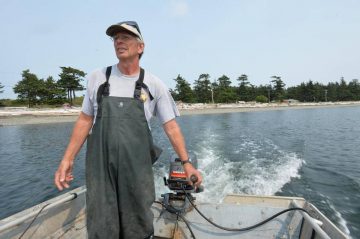 With fish counts remaining extremely low, it’s looking less likely that local commercial and tribal fishermen will get a chance to catch Fraser River sockeye salmon this summer. Fishermen in Canada and the U.S. have been waiting for the green light from the Pacific Salmon Commission to begin fishing for sockeye that are returning to the Fraser River in lower British Columbia. In its most recent assessment on Friday, Aug. 5, the sockeye run remains below expectations and the river remains warmer than normal, both factors in not opening the run. It’s not a surprising result, but still disappointing to fishermen like Pete Granger, who works for Lummi Island Wild. This is a crucial part of the run and if the numbers don’t improve in the next couple of weeks, the season will be lost, he said. Read the story here
With fish counts remaining extremely low, it’s looking less likely that local commercial and tribal fishermen will get a chance to catch Fraser River sockeye salmon this summer. Fishermen in Canada and the U.S. have been waiting for the green light from the Pacific Salmon Commission to begin fishing for sockeye that are returning to the Fraser River in lower British Columbia. In its most recent assessment on Friday, Aug. 5, the sockeye run remains below expectations and the river remains warmer than normal, both factors in not opening the run. It’s not a surprising result, but still disappointing to fishermen like Pete Granger, who works for Lummi Island Wild. This is a crucial part of the run and if the numbers don’t improve in the next couple of weeks, the season will be lost, he said. Read the story here
Two St. Mary’s watermen, notary charged in theft of rockfish permit probe
 Two St. Mary’s watermen and a woman working as a notary were charged Friday through summonses with criminal offenses in court papers alleging they took part in the fraudulent transfer of fishing permits that had been issued to a hospitalized quadriplegic. Robert M. Lumpkins, a 62-year-old Piney Point resident, earned about $10,000 during the 2015-2016 season by obtaining the striped bass allocation permit that originally belonged David Odonnell McKenney, who was admitted to a hospital early last September and died two months later, according to the charging papers filed this week by Maryland Natural Resources Police. Lumpkins and 28-year-old Ryan Marshall Edwards, also of Piney Point, were charged by a court commissioner with perjury, making a false entry to a public record and the theft of McKenney’s permits. Charges of counterfeiting a public seal and misconduct in office were filed against Sharon Lea Hammett, 63, of Leonardtown. Read the rest here 10:04
Two St. Mary’s watermen and a woman working as a notary were charged Friday through summonses with criminal offenses in court papers alleging they took part in the fraudulent transfer of fishing permits that had been issued to a hospitalized quadriplegic. Robert M. Lumpkins, a 62-year-old Piney Point resident, earned about $10,000 during the 2015-2016 season by obtaining the striped bass allocation permit that originally belonged David Odonnell McKenney, who was admitted to a hospital early last September and died two months later, according to the charging papers filed this week by Maryland Natural Resources Police. Lumpkins and 28-year-old Ryan Marshall Edwards, also of Piney Point, were charged by a court commissioner with perjury, making a false entry to a public record and the theft of McKenney’s permits. Charges of counterfeiting a public seal and misconduct in office were filed against Sharon Lea Hammett, 63, of Leonardtown. Read the rest here 10:04
Getting to Know the Fishermen Behind the Boats at Meet the Fleet
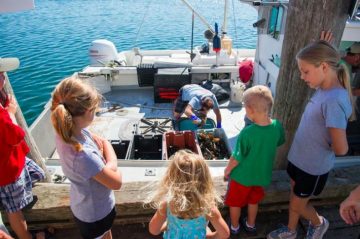 Most of the time the Menemsha dock is a quiet place, Captain Wes Brighton said. Fishermen come and go, unloading their catch and setting up to set sail. But on Thursday evening, the dock was bustling with people chatting with fishermen, learning how to fillet, racing crabs and slurping down oysters during the second annual Meet the Fleet. Organized by the Martha’s Vineyard Fishermen’s Preservation Trust, Meet the Fleet was created to draw attention to the Vineyard’s fishing industry and raise money for the organization. Funds go to help start a permit bank, create loans for new fishermen, and change restrictive legislation. This year’s event was in honor of Luke Gurney, a commercial conch fisherman who was swept overboard in June and died. John Keene, the president of the Fishermen’s Preservation Trust, said the absence of Mr. Gurney’s boat, No Regrets, was a noticeable difference this year. Read the story here 09:16
Most of the time the Menemsha dock is a quiet place, Captain Wes Brighton said. Fishermen come and go, unloading their catch and setting up to set sail. But on Thursday evening, the dock was bustling with people chatting with fishermen, learning how to fillet, racing crabs and slurping down oysters during the second annual Meet the Fleet. Organized by the Martha’s Vineyard Fishermen’s Preservation Trust, Meet the Fleet was created to draw attention to the Vineyard’s fishing industry and raise money for the organization. Funds go to help start a permit bank, create loans for new fishermen, and change restrictive legislation. This year’s event was in honor of Luke Gurney, a commercial conch fisherman who was swept overboard in June and died. John Keene, the president of the Fishermen’s Preservation Trust, said the absence of Mr. Gurney’s boat, No Regrets, was a noticeable difference this year. Read the story here 09:16
DFO crackdown in northern B.C. – “They’re screwing us.”
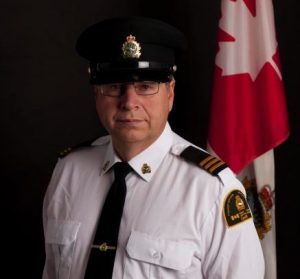 Commercial fishermen on B.C.’s North Coast are upset by what they’re calling an unprecedented and unfair Fisheries and Oceans Canada crackdown. Chris Peterson, a skipper who has been fishing commercially off the coast of Prince Rupert for 40 years, says the DFO has gone too far. “I have never seen anything like this,” Peterson said of the extra enforcement officers. “There were 17 of them on one boat last week — 17!” Most of the fishermen point to July 27 as the beginning of the conflict. That’s the day Hartley Bay Band Council Chief and fisherman Arnold Clifton was boarded by two DFO officers. “I was in the washroom on the boat when all hell broke loose,” Clifton recalled, describing rude treatment from the officers. He was fined, and then boarded again two days later, this time by even more DFO officials. Read the story here, with audio clip 08:10
Commercial fishermen on B.C.’s North Coast are upset by what they’re calling an unprecedented and unfair Fisheries and Oceans Canada crackdown. Chris Peterson, a skipper who has been fishing commercially off the coast of Prince Rupert for 40 years, says the DFO has gone too far. “I have never seen anything like this,” Peterson said of the extra enforcement officers. “There were 17 of them on one boat last week — 17!” Most of the fishermen point to July 27 as the beginning of the conflict. That’s the day Hartley Bay Band Council Chief and fisherman Arnold Clifton was boarded by two DFO officers. “I was in the washroom on the boat when all hell broke loose,” Clifton recalled, describing rude treatment from the officers. He was fined, and then boarded again two days later, this time by even more DFO officials. Read the story here, with audio clip 08:10






